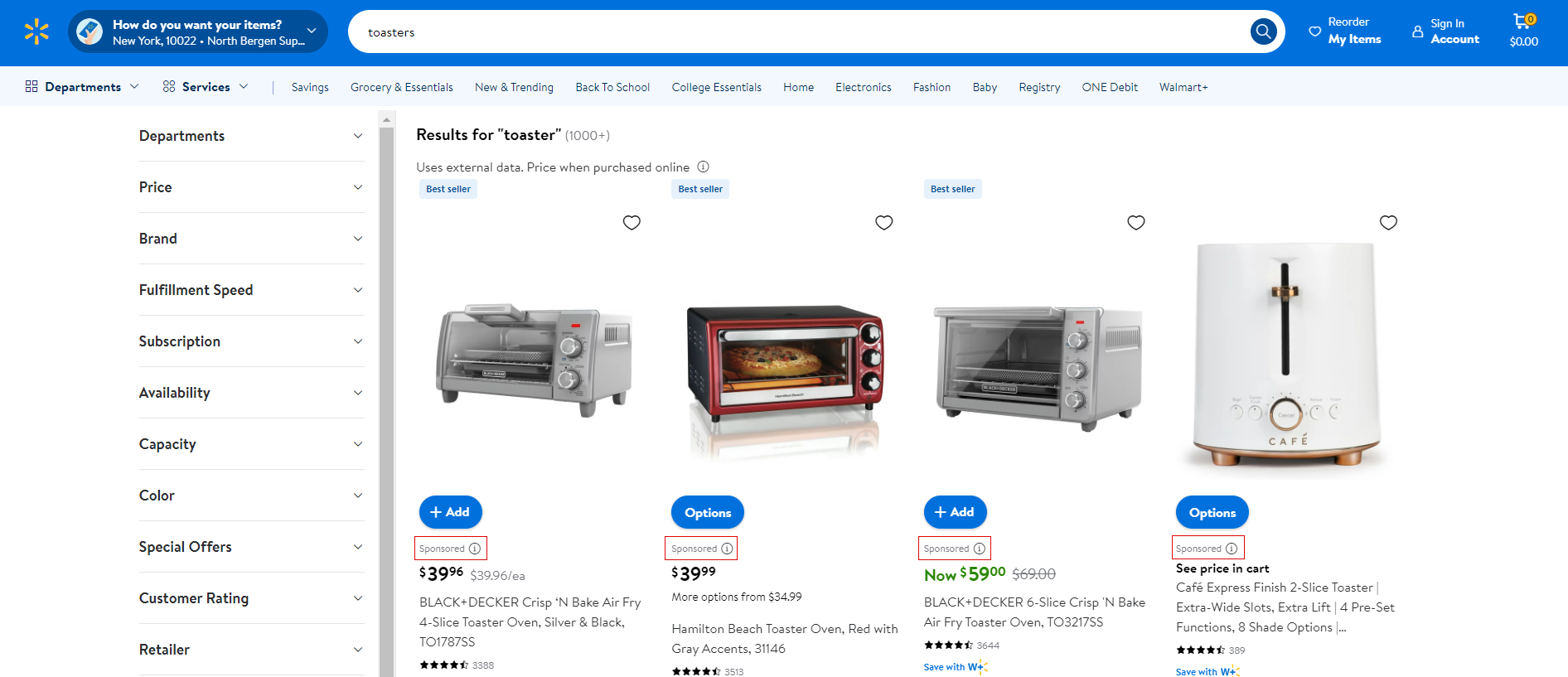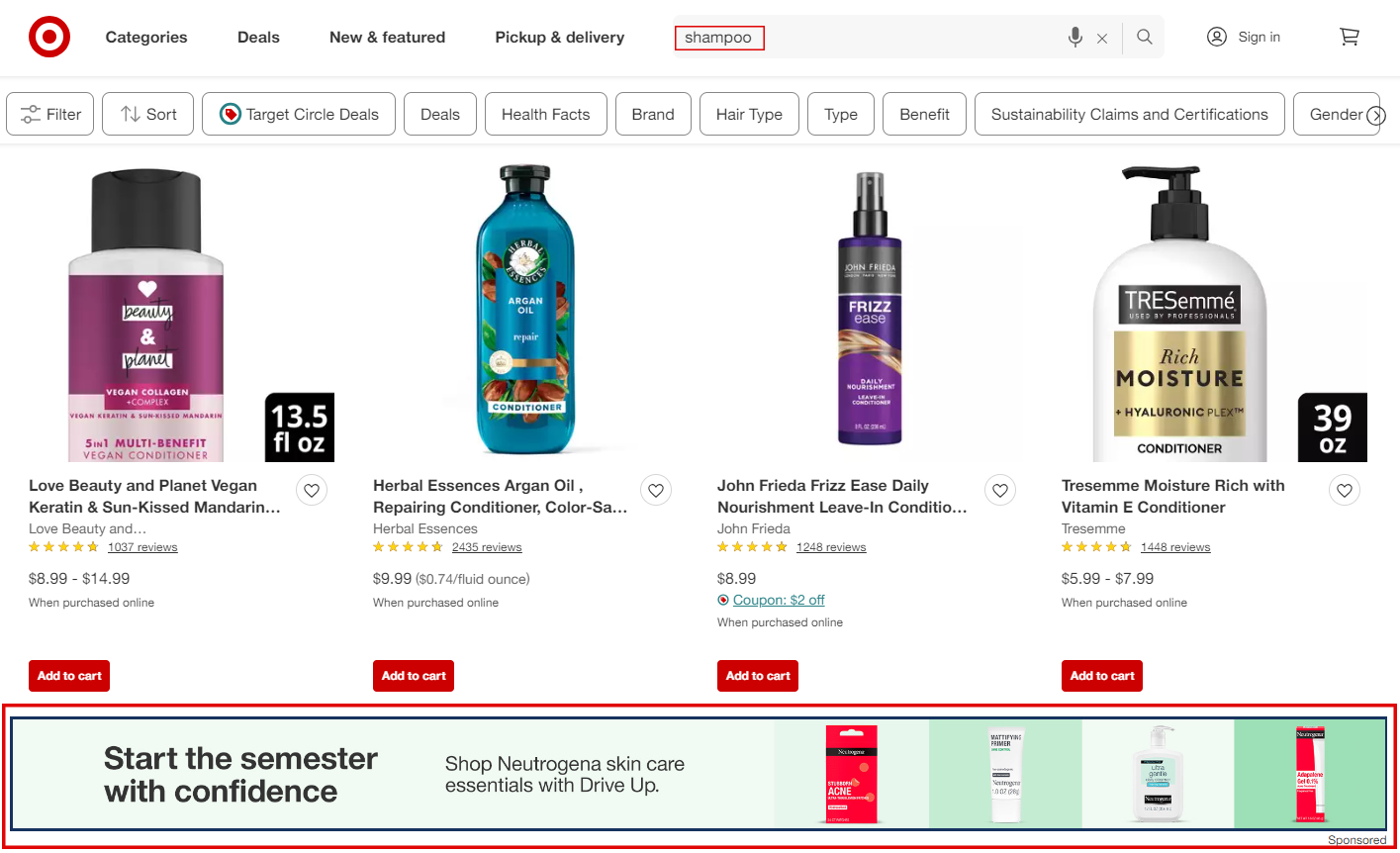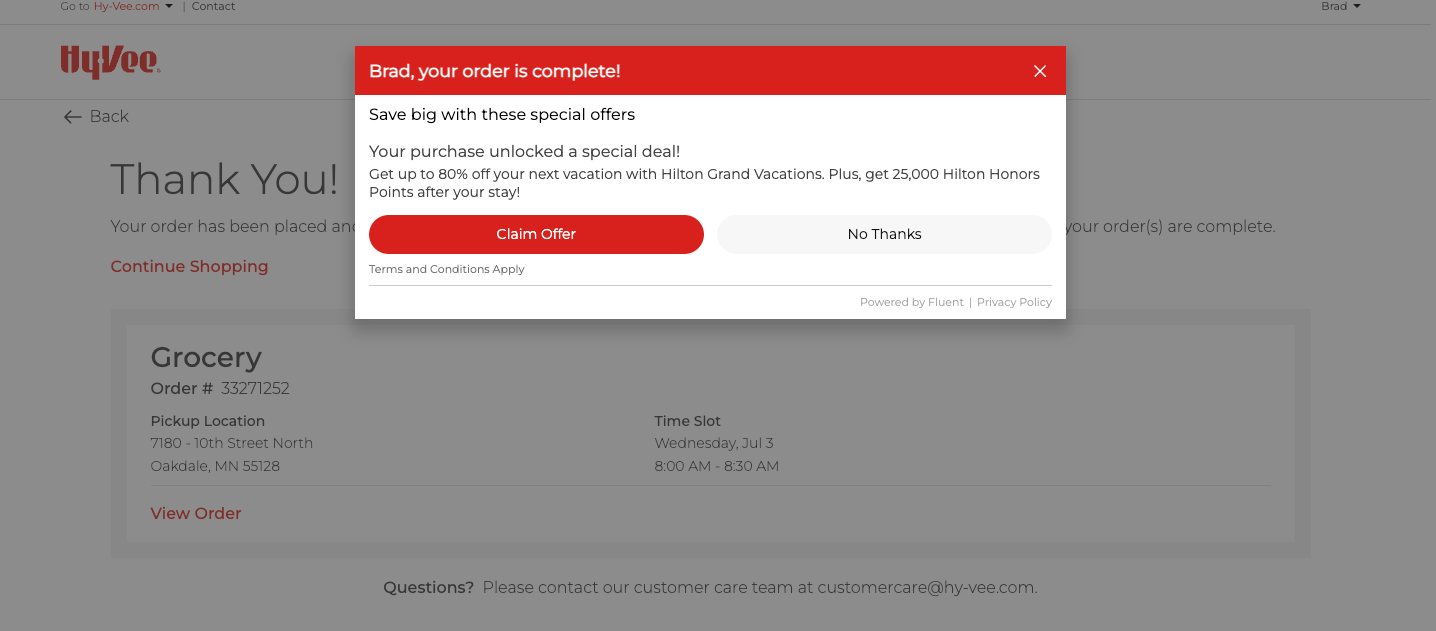
In today’s competitive digital landscape, a robust online presence is no longer just a nice-to-have; it’s a necessity. But simply having a website isn’t enough. In this guide, we explore how to effectively monetize a website, providing strategies to maximize your website’s earnings and transform it into a profitable asset.
Dive into the guide below for actionable tips, or navigate to a specific strategy:
Why Monetize Your Website?
Whether you’re an ecommerce brand or an online publisher, you likely have opportunities to generate additional revenue from your site. But monetization strategies aren’t just a way to capitalize on untapped real estate. They should also enhance the shopper experience by delivering real value.
Monetizing a website through strategies like advertising, subscription models, affiliate marketing, and sponsored content has the following benefits:
- Increase revenue 💸 Tap into new opportunities to boost your bottom line.
- Boost customer engagement 🛍️ Deliver personalized content and offers to deepen your relationship with your audience.
- Fund growth initiatives 🌱 Re-invest incremental revenue back into marketing initiatives or product development.
Choosing the Right Monetization Strategy
A well-executed monetization strategy should generate profits AND enhance the overall user experience. By carefully considering your target audience, web traffic, and revenue goals, you can select the approach that most closely aligns with customer and business needs.
Understanding Your Audience
Before exploring monetization strategies, spend some time getting to know your audience and the types of content and offers that resonate with them.

- Know your audience: Develop audience personas that outline demographics, buying behavior, and online habits.
- Identify their needs: Understand how your products or services address your audience’s needs.
- Segment your audience: Divide your audience based on shared characteristics.
Analyzing Your Website’s Traffic
Your website traffic holds valuable clues about where to focus your monetization efforts. Start by monitoring key metrics like sessions, bounce rate, and conversion rates. By analyzing user behavior from initial visit to purchase, you can pinpoint high-traffic areas and optimize them for maximum earning potential.
Types of Monetization Strategies
1. Advertising Strategies
Advertising is one of the most common ways to monetize a website. Explore tried-and-true advertising tactics for content sites and publishers and emerging opportunities for retailers.
Advertising Opportunities for Content Sites / Publishers
Despite a slowdown in overall programmatic digital display ad spending, this channel remains a steady revenue stream. In fact, eMarketer predicts this sector will generate a staggering $175.6 billion by 2025, making it a reliable monetization strategy for traditional publishers and content sites.
Types of Advertising
Content sites and publishers can monetize their websites through various advertising models:
- Cost Per Click (CPC): Advertisers bid on keywords related to your website’s content. When a visitor clicks on an ad relevant to their search, you earn a portion of the advertiser’s bid.
- Cost Per Mille (CPM): You get paid a fixed amount for every 1,000 times an advertiser’s ad appears on your website.
- Cost Per Action (CPA): The cornerstone of measurement in performance marketing. You get paid when a visitor completes a desired action after clicking on an ad. This may include making a purchase, signing up for a newsletter, or downloading an app.
Popular Ad Networks / Monetization Partners
Ad networks act as an intermediary, connecting website owners with advertisers. They handle ad placement, targeting, and payment, making implementation a breeze for more traditional publishers and content sites.
- Google AdSense is one of the most popular options. It offers various ad formats (text, image, video) and targeting capabilities, and it’s suitable for most websites.
- Taboola and Outbrain offer native advertising, displaying ads in a “You May Also Like” format at the end of articles. This monetization approach is meant to be seamless and non-intrusive.
- Fluent offers turnkey solutions to monetize the user journey with curated offers after actions like making a purchase, signing up for a newsletter, or completing a form. Learn more about Fluent’s post-transaction ad inventory below:
Advertising Opportunities for Retailers
For ecommerce businesses, the rise of retail media is helping to expand on-site advertising beyond Google Adsense. Retailers are launching their own on-site advertising offerings, leveraging first-party customer data to deliver tailored offers and further monetize their websites.
Types of On-Site Retail Media Ads
On-site advertising refers to promotional activities that take place within an ecommerce website. This means placing ads, banners, or other elements to engage visitors and drive conversions – all without disrupting the customer experience.
See below for examples of three turnkey on-site ad formats that are quick and easy to implement with the right partnerships in place.
Sponsored products:
Sponsored product ads are listings served within search results for contextually relevant products. They are placed at the top of search results and resemble organic listings, ultimately helping advertisers increase reach and establish credibility.

Display ads:
Display banners appear across ecommerce websites, and aim to grab attention with a clear call to action (CTA). The key to success is relevance. Retailers can use browsing history and search terms to show personalized offers or products that fit within the same category a shopper is already browsing.

Post-transaction ads:
Post-transaction ads are targeted offers shown to customers immediately after they make a purchase. They are personalized based on customer data and often include incentives like discounts or free shipping to boost customer satisfaction and loyalty.
Learn more about Fluent’s post-transaction advertising solution.

Partnering with the Right Advertisers
Beyond generating revenue, on-site ads should surprise and delight shoppers. Look to popular products or services on your website for insight into the types of advertisers and third-party offers that may resonate best with your audience.
Placing Ads Strategically
Your relationship with your customer is your most valuable asset, and advertising—or any monetization strategy, for that matter—should never interfere with that.
Preserving a positive user experience should be a top priority when deciding where to place ad inventory on your website. Analyze the consumer journey to understand how users navigate your site and where they may be most receptive to advertising.
Common ad placement options include:
- Homepage: Showcase promotions or new arrivals.
- Product Pages: Recommend related or complementary items.
- Category Pages: Highlight popular or discounted products.
- Checkout Page: Offer last-minute upsells or discounts.
- Confirmation Page: Promote complementary products or services.
Ensure ads blend seamlessly with your website’s design without compromising page load speed. With 76% of adults using their phones to make purchases, optimizing ad placements for mobile is also a must.
2. Subscription Model Strategies
Subscription models offer a powerful way to cultivate long-term customer relationships and build a steady revenue stream. By offering exclusive content, products, or services in exchange for a recurring fee, you can foster loyalty, increase customer lifetime value, and gain valuable consumer insights.
Membership Programs
Creating a membership program is a great way to build a community around your brand and monetize your website. To entice customers to subscribe, offer access to premium content, exclusive discounts, or early product releases.
Premium Content
If you’re a publisher, consider implementing a paywall strategy to monetize your content. By placing high-quality, in-depth content behind a paywall, you can generate recurring revenue while still offering free content to attract a wider audience.
See it in Action: The Washington Post, for instance, offers tiered subscription plans to cater to different consumer needs and preferences. Their “All-Access Digital” and “Premium Digital” offerings unlock additional content and added perks for a yearly fee.
Freemium Model
Another popular approach is the freemium model. Offer a basic version of your product or service for free, then entice users to upgrade to a paid subscription for advanced features or unlimited access.
See it in Action: Forbes leverages a “freemium” model, giving non-members access to up to three free articles each month. Once they reach this limit, readers must subscribe for unlimited digital access and members-exclusive perks.
Members-Only Discounts
For retailers, subscription models can be used to create exclusive offers for members. Provide discounts, early access to sales, or personalized product recommendations to incentivize sign-ups and increase purchase frequency.
See it in Action: For example, Fabletics, a leading athleisure brand, has excelled at creating a loyal customer base through its VIP Membership program. For a monthly fee, subscribers receive 20-50% off retail prices and VIP access to limited edition drops and celebrity collaborations.
Recurring Revenue Benefits
Research has shown that retaining customers is less expensive than acquiring new ones; in fact, improving retention by just 5% can drive profits up over 25%. Subscription models provide a stable revenue stream, allowing businesses to strengthen existing customer relationships, better forecast future earnings, and drive repeat purchases.
3. Affiliate Marketing Strategies
Affiliate marketing offers a valuable opportunity to monetize your website via partnerships with complementary brands. By recommending products or services that align with your audience’s interests, you can enhance the overall customer experience while generating additional revenue.
How Affiliate Programs Work
Affiliate marketing involves three key players: the merchant (the brand supplying the offer), the affiliate (the business promoting the offer), and the customer.
Affiliates act as middlemen, connecting consumers with merchants and earning a commission for each successful transaction facilitated through their platform
For example, discount and coupon site Retail Me Not establishes partnerships with a wide array of advertisers, securing exclusive deals, coupons, and promo codes.
When users click on a specific deal or coupon, they are redirected to the retailer’s website through a unique affiliate link. If a user makes a purchase after clicking on the affiliate link, RetailMeNot earns a commission from the retailer.
Integrating Affiliate Links Seamlessly
According to eMarketer, affiliate marketing ranks among the least intrusive ad types when compared to ads based on previous search history or physical location.
To maximize conversions, it’s essential to achieve a seamless integration. Here are a few best practices to keep in mind:
- Use Clear and Compelling CTAs: Encourage visitors to click on affiliate links with persuasive language.
- Create dedicated affiliate pages: Showcase affiliate products or services in a dedicated section of your website.
- Partner with affiliate networks: Consider using affiliate networks like CJ Affiliate or Impact to streamline your program’s logistics.
By carefully selecting offers and integrating affiliate links into your website, you can deliver additional value to consumers and unlock a new revenue stream.
4. Sponsored Content Strategies
Sponsored content allows you to monetize your website with paid articles introducing new products or services. By partnering with brands to create valuable and informative content, publishers generate additional revenue while brands reach their target market more authentically.
While you may see “sponsored content” disclosures most frequently in your social media feed, advertisers can also partner with brands to create sponsored content that lives directly on their websites. The goal is to make the content feel like a natural part of the site, rather than an obvious ad.
Collaborating with Brands
To begin, identify brands that align with your website’s value, target audience, and content style. When initiating a new partnership, clearly outline expectations and goals to ensure you and your partner are aligned on content guidelines, payout structures, and other key campaign details.
Creating Engaging Sponsored Posts
Crafting compelling sponsored content requires a delicate balance. The content should deliver value to your audience and remain authentic to your website’s voice. Experiment with different formats, such as blog posts, videos, infographics, or listicles to keep your audience engaged.
Disclosure and Transparency
For publishers and content creators committed to high editorial standards, preserving audience trust is essential for long-term success.
To maintain trust and comply with regulations, follow these best practices:
- Clear Labeling: Use clear and conspicuous labels such as “Sponsored Content” or “Paid Partnership” to maintain transparency.
- FTC Guidelines: Adhere to Federal Trade Commission (FTC) guidelines for sponsored content to avoid legal issues.
- Honest Reviews: If reviewing a product or service, provide an honest and unbiased opinion.
See it in Action: A prime example is The Smart Wallet’s review of the Fetch Rewards app. This article provides readers with valuable information on how the app works while subtly highlighting its benefits. The inclusion of clear disclosure language, such as “sponsored links,” ensures transparency and maintains audience trust.
Learn more about Fluent’s performance-driven sponsored content solutions.

Analyzing and Optimizing Revenue Streams
To maximize your website’s earning potential, it’s essential to continuously monitor, analyze, and refine your monetization strategies. By leveraging the power of data and experimentation, you can identify additional opportunities to increase revenue and enhance the user experience.
Tracking Performance with Analytics
Once you’ve launched a monetization strategy, it’s time to focus on reporting and measurement. When selecting monetization partners and solutions, prioritize those that offer comprehensive reporting capabilities. Key metrics to monitor include revenue per session, click-through rates, and conversion rates. These insights will help you identify top-performing strategies and areas for improvement.
A/B Testing Different Strategies
Any successful monetization strategy is incomplete without a healthy does of experimentation. A/B testing allows you to tweak ad placements, experiment with pricing structures, and test various content formats to determine which ones resonate best with your audience.
Making Data-Driven Decisions
Remember, optimization is an ongoing process. Use campaign learnings to refine your monetization strategies, personalize the user experience, and drive ongoing engagement. By continuously adapting to user behavior and market trends, you can sustain long-term growth and profitability.
Upgrade Your Monetization Strategy with Fluent
Now that you know how to monetize a website, Fluent can help you get started.
Our AI-powered technology connects brands with consumers at the most engaging touchpoints across the customer journey. Here are some of the ways Fluent works with ecommerce businesses and publishers to drive impactful engagement and boost revenue per session:
- Monetize the user journey: Capture revenue immediately after actions like signing up for a newsletter or completing a form.
- Maximize your checkout page: Enrich the shopping experience by delivering premium offers in the post-purchase moment.
- Ramp up your loyalty program: Delight customers by incorporating gaming apps and exciting offers into your loyalty programs.
Don’t take our word for it! See how we helped a global leader in licensed sports merchandise deliver a better post-purchase experience and increase revenue per transaction by over 54%.
Ready to elevate the customer journey while unlocking additional revenue? Contact our team of experts to get started.
Check out more resources to get fluent in:
Retail Media | Affiliate Marketing | Native Advertising | A/B Testing